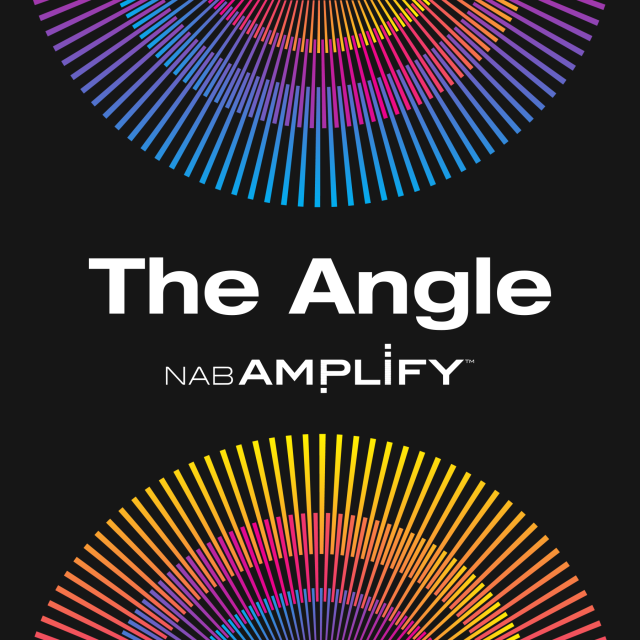
TL;DR
- As FOX’s Chief Technology Officer, Melody Hildebrandt is spearheading efforts to address the challenges posed by deepfakes and AI-generated misinformation.
- Hildebrandt urges broadcasters to lead the technical conversation against Big Tech, advocating for a united front to leverage and manage AI technology responsibly within the industry.
- FOX adopts an “AI optimistic” stance, she says, recognizing the potential for new capabilities and economic opportunities. However, this stance emphasizes the importance of publishers controlling the use of their intellectual property within AI models.
- FOX has launched Verify, a project to cryptographically sign all its online content, ensuring its provenance and combating misinformation. This technology uses blockchain to provide a tamper-proof record of content authenticity.
- FOX aims to build a coalition around the Verify protocol, encouraging collaboration over competition among publishers to set a unified technical standard that counters Big Tech’s influence and protects content integrity.
Melody Hildebrandt began her career designing war games for the Department of Defense. Almost two decades later, as chief technology officer at FOX, she is leading a major initiative to combat the threat of deepfakes and AI-generated misinformation.
It’s a fight that media needs to take to Big Tech, says Hildebrandt, and she wants broadcasters to unite, fight back and flourish in the new AI economy.
“It’s time for broadcasters to actually take the lead in the technical conversation by defining the core architecture about how our industry is going to run in the future.”
The media industry needs to take defensive and offensive positions to manage AI, she asserts.
“We are in the ‘AI optimistic’ camp. We are bullish on the new capabilities and economic opportunities. But we also believe publishers should control how their intellectual property is used and commercialized within AI models — whether that is LLM training or real-time Retrieval Augmented Generation (RAG) via chatbots.”

“In this age of AI-generated media abundance the content coming from trusted brands like ours is going to be more important than ever. Consumers are going to rely on brands like FOX to help them navigate the information space in front of them. But trust is going to be exploited in this new information space. So, to thrive in this new area there are certain guardrails to put in place.”
Hildebrandt is the company’s lead on Verify, a project that sets out the technical foundations for proving the provenance of media that FOX publishes. Development started a year ago and the tech is already out of the gate.
Every single piece of content that is published online by FOX News or FOX Sports or from any one of its local stations, is now cryptographically signed with Verify.
“The moment content goes online it gets simultaneously written on the blockchain and can be verified using the tool,” she says.
Prior to becoming CTO, Hildebrandt was president of FOX subsidiary Blockchain Creative Labs, leading the broadcaster’s information security program. Now she is running seven strategic AI projects for the company.
Her team approached the challenge as both problem and opportunity. On the one hand, FOX content is valuable and there is an opportunity to derive revenue by licensing it to LLMs. On the other, there’s a need to combat misinformation and mitigate the threat of reputational damage.
She cites a post by a Twitter (now known as X) user with more than a million followers that purported to be a repost of a FOX News story falsely stating that Saudi Arabia had entered the war in Israel.
“How are consumers going to navigate this information space and know that the content that proports to be from FOX is in fact from us? As we explore these technologies we have to make sure that we preserve our brand and don’t do things to undermine the trust that our consumers have with us.”
Bringing both business and consumer problems together resulted in Verify.
“We think the solution is fundamentally the same which is to create a cryptographic hash of an image on publication and store that on the chain. Users can then compare that to another image by a simple drag and drop and tell if they’re actually the same. We thought that was the right way to tackle the problem, at least on this version one of release.”
Verify would seem to diverge from that of the C2PA, a similar content credentials initiative backed by Adobe, The New York Times, the BBC and OpenAI. In fact, FOX supports C2PA too.
The C2PA standard is part of the Verify manifest. The C2PA has worked to embed metadata in content straight from camera to the moment of publishing, tracking all the ways it has been transformed as well as labelling that for anyone to check. Verify essentially picks up from the moment of publication to offer a way for publishers to monetize their authenticated content.
“We believe an open source, publicly verifiable and legitimate method of content ingestion from trusted sources is the better, safer way for models to be trained and to reference published content,” Hildebrandt says. “This is what we hope is a productive first step, an open source starting point grounded in technical solutions.”
She says LLM developers like OpenAI have been receptive. Since LLMs need data to train their AI models “they recognize that they’re going to need to start paying for content. I think that’s where this is going and where standards are interesting.”
Hildebrandt continues, “A company like OpenAI would say they can’t interact with thousands of publications and do bespoke integrations with all of them. But we can offer Verify as a common standard that facilitates that interaction. OpenAI benefits. Thousands of publisher’s benefit.”
An example: The Des Moines Register could use Verify to licence its content while LLM developers won’t have to create a bespoke technical integration in order to legally access, and pay for, the paper’s content.
She says this differs from the problem that C2PA is trying to solve. “The work of the C2PA is super important but doesn’t solve the business problem of how it applies to LLMs.”
Licensing Verified content offers FOX upsides in terms of “the business guardrails that we can impose and when we want to negotiate deals for our content with large language models.”
No company today has the ability to scour the internet or social platforms for every misuse of its content let alone enforce take-downs, but Verify will there for adjudication in case of dispute.
“The most important thing is that we have now the proof. If there’s a downstream piece of content that we see has been manipulated, or used without license, then we actually have the evidence on the chain. It’s a tamper proof record. We can see exactly when we signed it, in the exact context. It’s a line in the sand. But can we scan the internet to find every misuse of our licensed content? I don’t think anyone has solved that yet.”
FOX is among media groups helping to educate politicians and legislators about the threats of AI and how media would like to see it regulated. “We’re part of that conversation and my observation is that the Hill would very much like to see a market driven solution for the business problem,” Hildebrandt says. “That’s one reason that we’re excited to put Verify out there.”
She makes the analogy of trying to move the industry from Napster to iTunes. “It’s a kind of Wild West in the beginning but the technologies are maturing to the extent that, with Verify, we can offer a way for users of AI to pay for content the licensed way.”
“As a community of broadcasters we need to think about licensing and protecting our content and helping consumers to navigate that information space.
“At FOX, we’re hoping to build a coalition to build on this protocol. We’re assembling an initial founding group of publishers who want to help shape the future of the protocol. They might want to input into features they want to see developed. Because Verify is open source anyone can contribute to the project and anyone can build their own extensions to it.
“This is an area we think we should all collaborate on. We may compete on the substance but we should collaborate on the technical infrastructure because otherwise Big Tech will impose its infrastructure onto us. It’s a moment for us to take a stand.”

Why subscribe to The Angle?
Exclusive Insights: Get editorial roundups of the cutting-edge content that matters most.
Behind-the-Scenes Access: Peek behind the curtain with in-depth Q&As featuring industry experts and thought leaders.
Unparalleled Access: NAB Amplify is your digital hub for technology, trends, and insights unavailable anywhere else.
Join a community of professionals who are as passionate about the future of film, television, and digital storytelling as you are. Subscribe to The Angle today!


